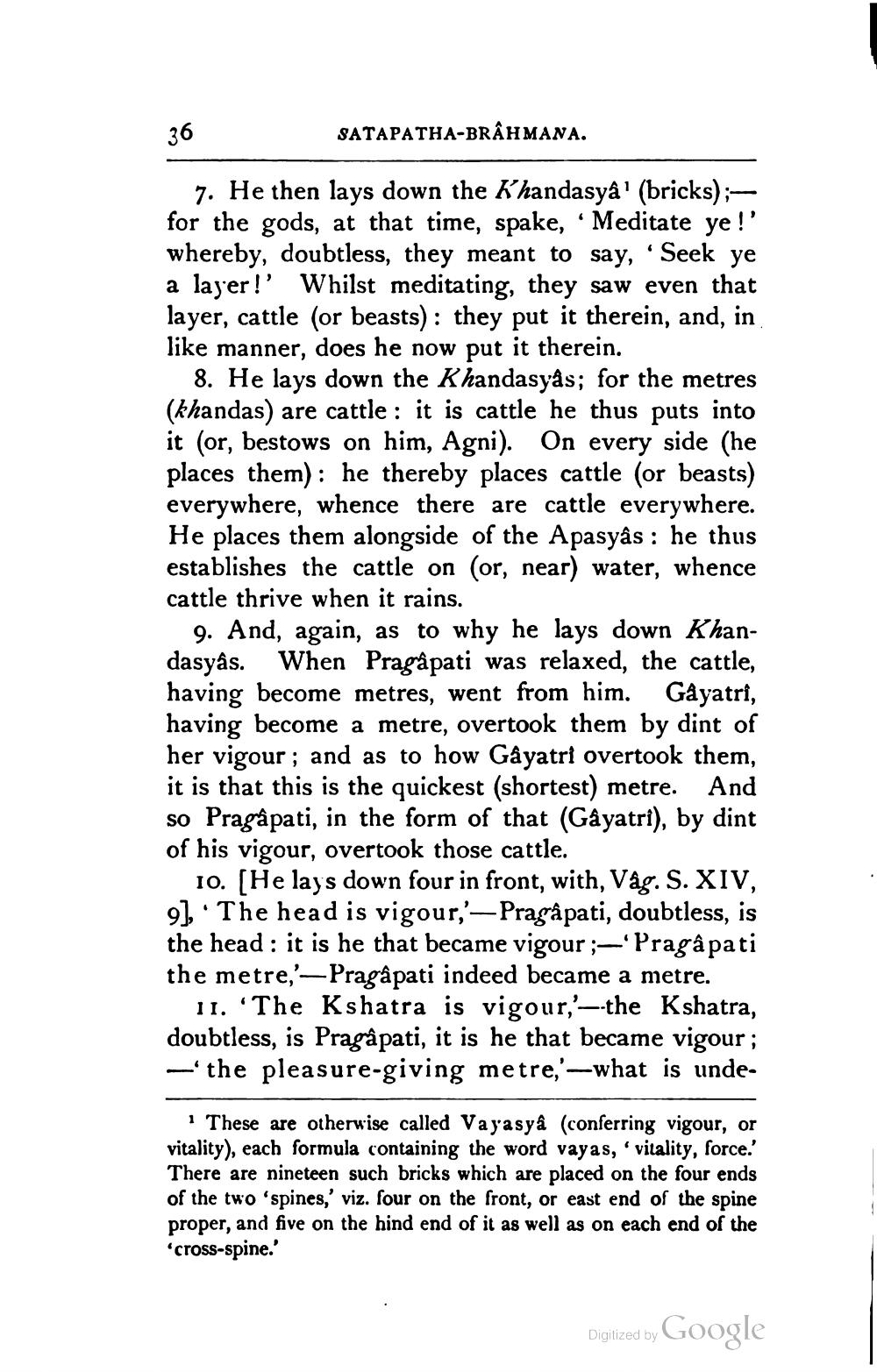________________
36
SATAPATHA-BRÂHMANA.
7. He then lays down the K'handasyâ' (bricks);for the gods, at that time, spake, Meditate ye!' whereby, doubtless, they meant to say, 'Seek ye a layer!' Whilst meditating, they saw even that layer, cattle (or beasts): they put it therein, and, in like manner, does he now put it therein.
8. He lays down the Khandasyås; for the metres (khandas) are cattle: it is cattle he thus puts into it (or, bestows on him, Agni). On every side (he places them): he thereby places cattle (or beasts) everywhere, whence there are cattle everywhere. He places them alongside of the Apasyâs : he thus establishes the cattle on (or, near) water, whence cattle thrive when it rains.
9. And, again, as to why he lays down Khandasyâs. When Pragàpati was relaxed, the cattle, having become metres, went from him. Gayatri, having become a metre, overtook them by dint of her vigour; and as to how Gayatri overtook them, it is that this is the quickest (shortest) metre. And so Pragâpati, in the form of that (Gayatri), by dint of his vigour, overtook those cattle.
10. (He lays down four in front, with, Våg. S. XIV, 9],. The head is vigour,'— Pragâpati, doubtless, is the head : it is he that became vigour ;-Pragâ pati the metre,'- Pragâpati indeed became a metre.
11. 'The Kshatra is vigour,'--the Kshatra, doubtless, is Pragâpati, it is he that became vigour; —'the pleasure-giving metre,'—what is unde
1 These are otherwise called Vayasyâ (conferring vigour, or vitality), each formula containing the word vayas, vitality, force.' There are nineteen such bricks which are placed on the four ends of the two 'spines,' viz. four on the front, or east end of the spine proper, and five on the hind end of it as well as on each end of the *cross-spine.'
Digitized by Google




